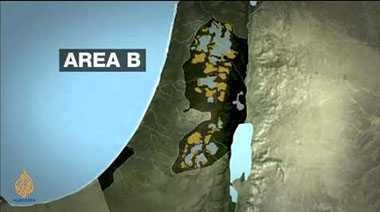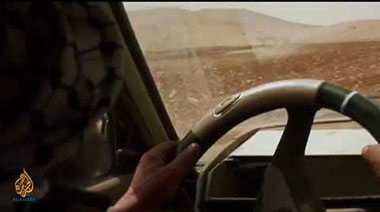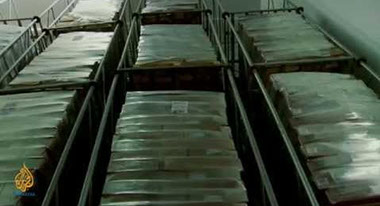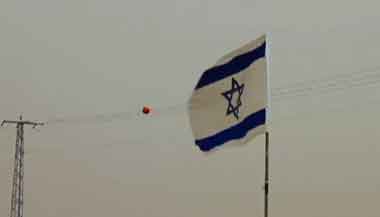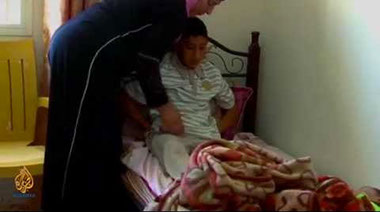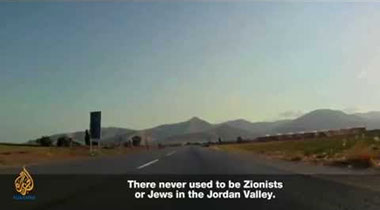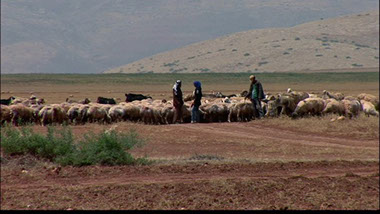MARIAM SHAHIN & GEORGE AZAR
Film Directors
LAST SHEPHERDS OF THE VALLEY
In 1993, Yasser Arafat signed the Declaration of Principles with Yitzhak Rabin to begin negotiations towards a comprehensive peace settlement. The historic moment was supposed to sow the seeds for an independent Palestinian state; instead, it served to undermine that dream.
As negotiations progressed that year, there were growing signs Israel was acting in bad faith. Israeli settlement expansion in the occupied West Bank continued. The occupation itself intensified. In 1995, another agreement was struck. This one divided the occupied West Bank into three non-contiguous regions known as Areas A, B and C.
Area A eventually grew to comprise 18 percent of the occupied West Bank, where the newly-formed Palestinian Authority (PA) exercised control over civilian affairs and internal security. In both Areas A and B, overall security remained in Israeli hands, meaning that the occupying power retained the authority to conduct raids on Palestinian homes and land at any time.
Today, Area C accounts for 60 percent of the occupied West Bank. Here, Israel holds complete control over civilian and security matters. Control over Area C was supposed to be gradually handed over to the PA, but that never happened. Instead, Israel strengthened its grip on the OPT by expanding its illegal settlements.
Many Palestinian villages under direct Israeli control are located in the east part of the West Bank, known as the Jordan Valley. The Jordan Valley falls between the borders of historic Palestine and Jordan. The region’s fertile land and vast water resources hold rich economic potential. Residents of the territory call it the “breadbasket” of any future Palestinian state.
Since Israel occupied the Gaza Strip and West Bank in 1967, it has systematically sought to expel Palestinians from the Jordan Valley. Palestinians’ homes, villages and farmland have been destroyed to make room for Israeli settlements.
The Jordan Valley’s natural resources make it an appealing location for new Israeli settlements. Most of the region’s water is sourced from basins in the northern part of the Jordan Valley. Controlling this area enables Israel to divert this water to settlements all across the occupied West Bank. Palestinians living in the Jordan Valley are often forced to travel dozens of kilometres for water because Israel routinely cuts off their water supply, diverting pipelines to serve settlements instead.
Israeli settlers have easy access to water and farmland, thanks to the protection they receive from the Israeli army. Israel’s lucrative export of agricultural products to European countries and elsewhere is only possible because of the Israeli occupation.
The agreements between the Israelis and the Palestinian Liberation Organisation (PLO) have meant that those Palestinians living in the West Bank express their grievances to the PA, rather than to the occupying power. Based in Ramallah, the limits to the PA’s restricted autonomy are enforced by Israel, with the PA’s authority in Areas B and C severely restricted.
The Israeli army and Israeli settlers in Area C are often violent towards Palestinians living there. Stray bullets from Israeli army training exercises have injured and killed Palestinians. Landmines buried throughout the Jordan Valley result in additional casualties. Armed settlers frequently attack Palestinian villagers, set fire to their farms and kill their animals.
Like elsewhere in the occupied West Bank, Palestinians in the Jordan Valley are denied the freedom to travel. They are subjected to checkpoints and arbitrary detention. The violence, along with the travel restrictions, make life incredibly difficult for Palestinians, leaving many with no choice but to leave. This, in turn, makes it easier for the Israelis to claim even more land.
Palestinians in the Jordan Valley say Israel’s policies are also destroying the land itself. Plants and wildlife, which have survived for generations, are suddenly threatened with extinction.
As the Israeli occupation and annexation of the Jordan Valley continue, the prospect of an independent Palestinian state grows dim; put simply, there can be no viable ‘Palestine’ without the Jordan Valley.
WATCH THE FILM
ETHNIC CLEANSING
PALESTINIAN AUTHORITY
OCCUPIED PALESTINIAN TERRITORIES
CREDITS
DIRECTED BY
MARIAM SHAHIN &
GEORGE AZAR
DIRECTOR OF PHOTOGRAPHY
GEORGE AZAR
EDITOR
EYAD HAMAM
COMMISSIONING SENIOR PRODUCER
RAWAN DAMEN
PRODUCTION YEAR
2012
REVERSIONED BY AL JAZEERA WORLD TO ENGLISH – 2012
COPYRIGHT © ALL RIGHTS RESERVED FOR AL JAZEERA
RETURN TO TOP
